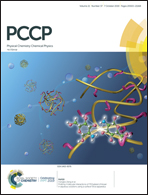Evaluation of interfacial stability and strength of cermets based on work function
Abstract
A new method based on work function to analyze the interfacial stability and strength of ceramic–metal composites was proposed in this work. The interfacial work function gradient and interfacial elastic modulus were evaluated experimentally using WC–Co and TiC–Co as the examples. It found that a stable and strongly bonded interface had a gradually changing interfacial work function, while a weak interface exhibited a steep work function changing across the interface. The spatial resolution of the experimental analysis could be down to 10 nm with a high work function sensitivity. First-principles calculations were conducted to analyze the electronic configurations across the interfaces. They revealed the potential distribution across the interfaces in the sub-nano scale. They demonstrated that the interface with a smaller interfacial work function gradient had smaller interface energy and stronger interfacial bonds, and thus the interface was more stable and stronger. The calculation disclosed the mechanism of the experimental observations of the interfacial work function. Both the experimental and theoretical studies confirmed that the interfacial work function gradient could be a measure of the interactions across the interfaces. The effectiveness of the established model was demonstrated by analyzing the stability of thin films at WC/Co interfaces. This study provides a new method to evaluate the interfacial stability and bonding strength for cermets.



 Please wait while we load your content...
Please wait while we load your content...